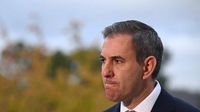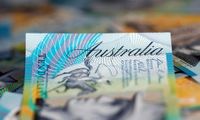On March 25, 2025, Treasurer Jim Chalmers is set to unveil Australia’s federal budget for the 2025-26 financial year, which promises a total of $29.3 billion in spending, focusing significantly on the cost of living crisis. While details remain closely guarded until the budget is officially presented at 7:30 PM AEDT, various pre-budget announcements have hinted at the core initiatives aimed at easing financial pressures on Australians.
According to government officials, the budget will feature a robust $8.5 billion infusion into Medicare, a move noted by Sian Fenner, head of business and industry economics at Westpac, who stated, “The budget is unlikely to contain any significant surprises,” referring to the numerous announcements made in advance.
One of the highlights is an allocation of $1.2 billion for the recovery efforts of Cyclone Alfred, addressing ongoing challenges faced by affected communities. Moreover, the government has extended electricity rebates to help combat rising costs, with households receiving a $150 rebate on their power bills for the latter half of the year, another significant relief measure aimed primarily at struggling families and small businesses.
In addition to energy rebates, the federal government has unveiled plans for a 20% reduction in student debts. This initiative could provide substantial relief to approximately three million individuals carrying student loans, potentially leading to an average reduction of $5,400 per person, who typically holds around $27,000 in debt.
The budget is designed not only to provide immediate financial relief but also to better the overall healthcare system in Australia. The government has committed to enhancing access to general practitioners (GPs) by promising that 18 million more GP visits will be bulk-billed each year. This initiative aligns with the government’s push to improve healthcare accessibility and reduce out-of-pocket expenses.
In line with easing the cost of living, further details indicate that the Pharmaceutical Benefits Scheme (PBS) will witness reductions in the prices of medicines. The government plans to cut the maximum price of PBS-listed medicines from $31.50 to $25, reflecting a dedicated effort to lower healthcare costs.
Treasurer Chalmers articulated the broader goals of the budget, emphasizing its dual focus on managing cost-of-living challenges and fostering economic growth. “Now, this is not a budget for the election. It's a budget to build Australia's future,” he stated. He mentioned that while the nation’s gross debt is projected to peak at $940 billion in 2024-25, it remains relatively low compared to other nations, given that it is about a third of the size of Australia’s economy.
Chalmers also pointed out that the government's fiscal management has effectively reduced the previous government’s debt by $177 billion, leading to significant savings in interest payments for citizens. He stressed the necessity of fiscal responsibility while continuing investment in the areas essential for maintaining Australia’s social infrastructure.
To further bolster the economy, the budget has earmarked substantial funding for various infrastructure initiatives, including a $7 billion investment in Queensland's Bruce Highway and $1 billion for a rail link between Sydney’s southwest and the Western Sydney airport.
Moreover, an alcohol excise freeze specifically for draught beer has been announced for two years, providing additional relief, particularly for local breweries and hospitality venues.
However, the budget does not come without its challenges; any cuts to public service budgets could create hesitations among public servants anticipating the impacts of proposed program cuts and funding reallocations. Analysts indicate this adds a layer of uncertainty around the pending budget and its implications.
As stakeholders prepare for the budget details to unfold, Chalmers and finance officials indicate that discussions will continue to focus on the critical needs of Australians. For instance, with advocacy groups urging further increases in Jobseeker payments beyond a recent increase of merely $0.22 to $55.79 daily, the governmental response remains cautiously optimistic.
As this budget is unveiled, it becomes clear that the government is positioning itself to provide immediate relief and address long-term economic sustainability against a backdrop of various domestic challenges. The 2025-26 federal budget, then, becomes a pivotal piece in Australia’s narrative of recovery and resilience.








